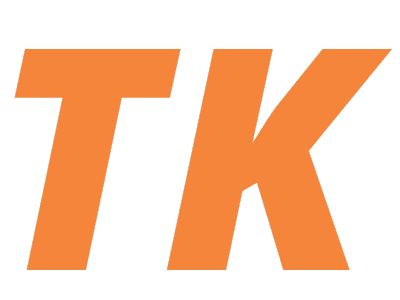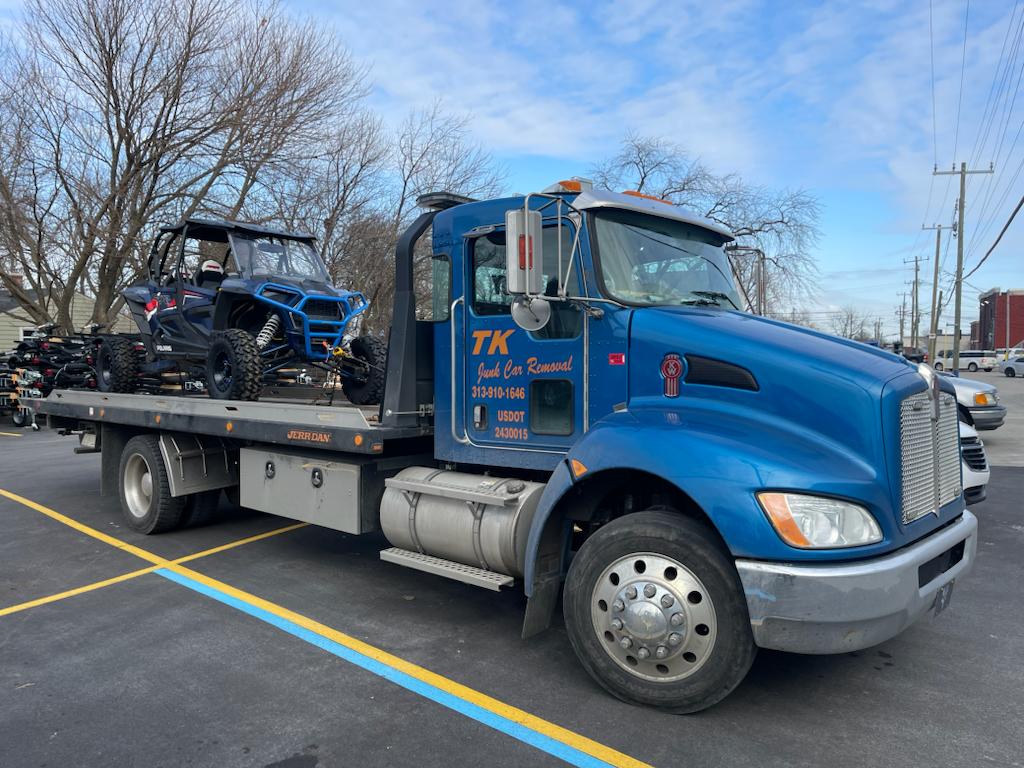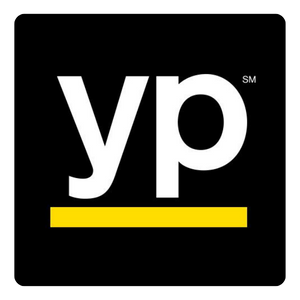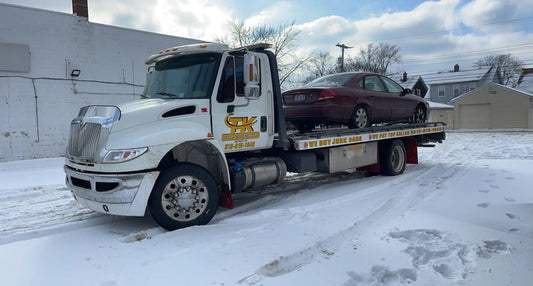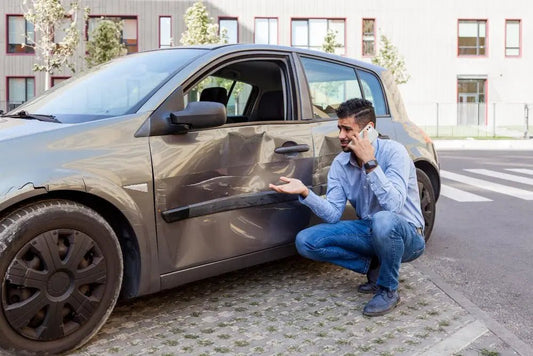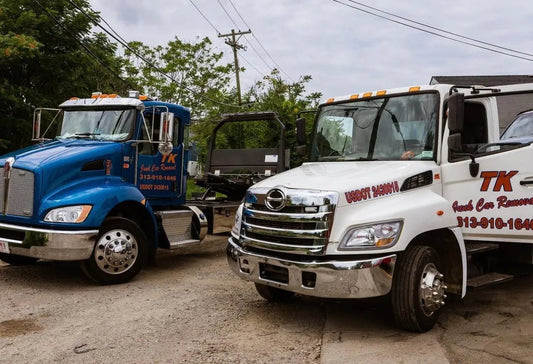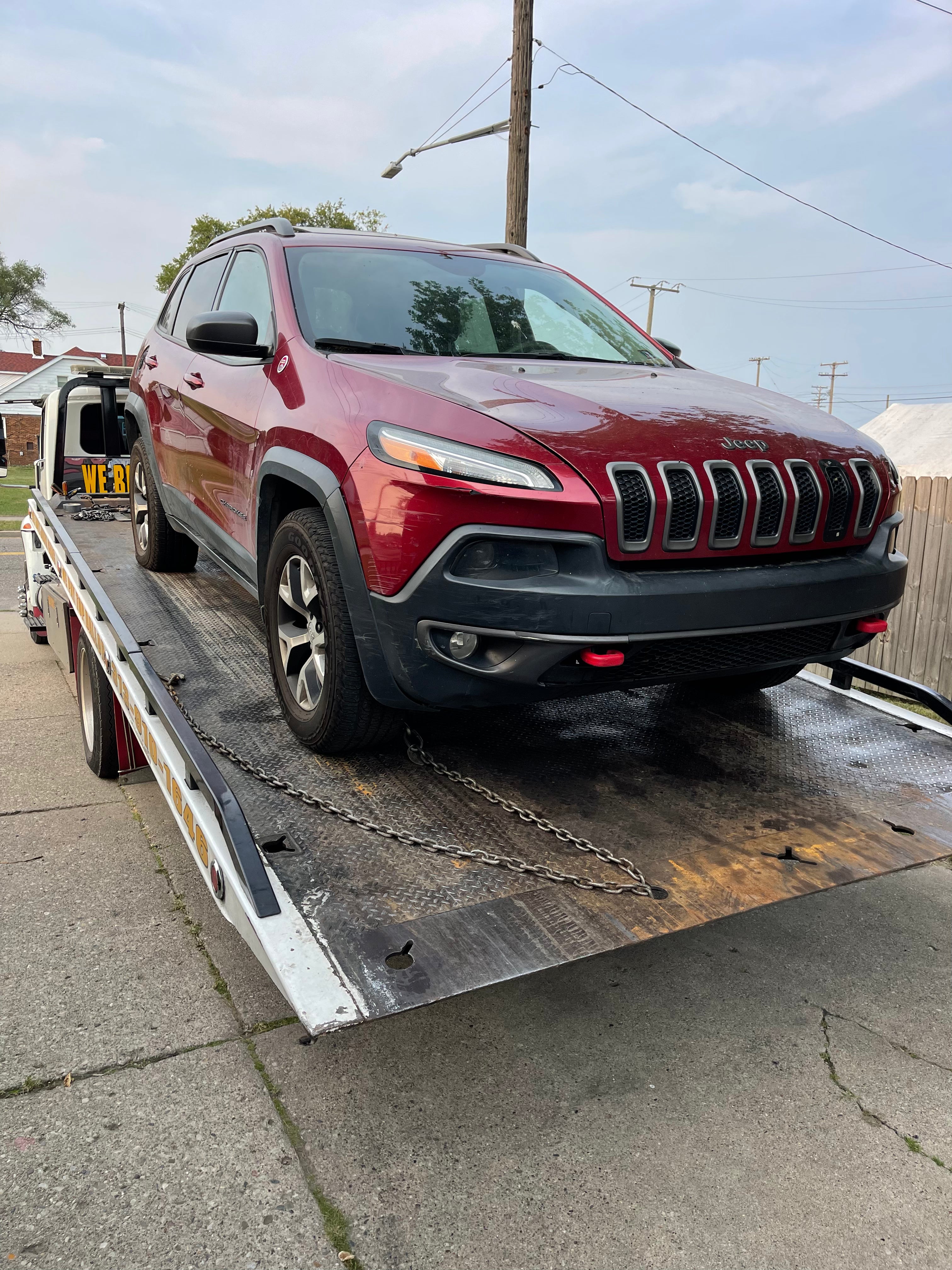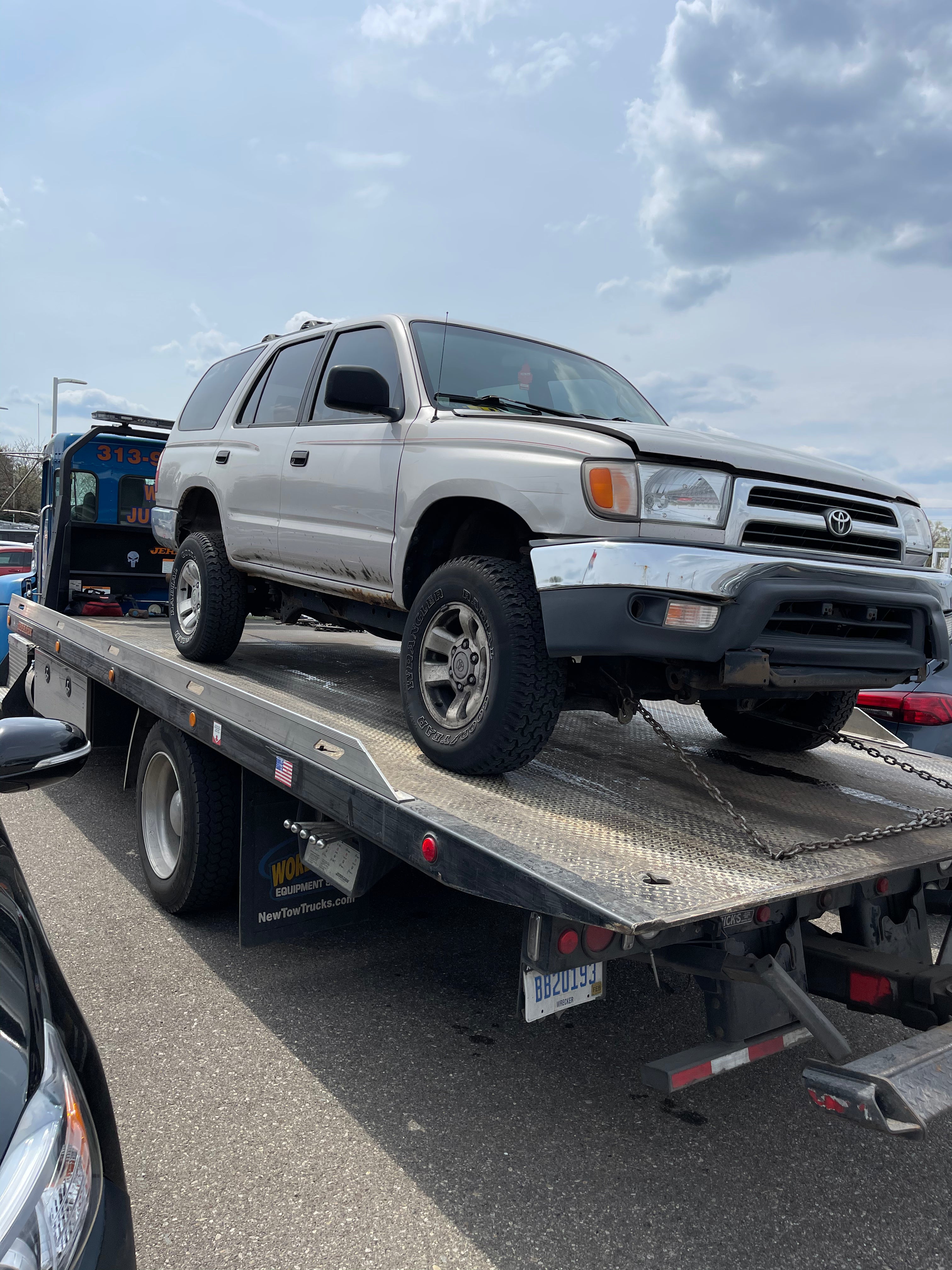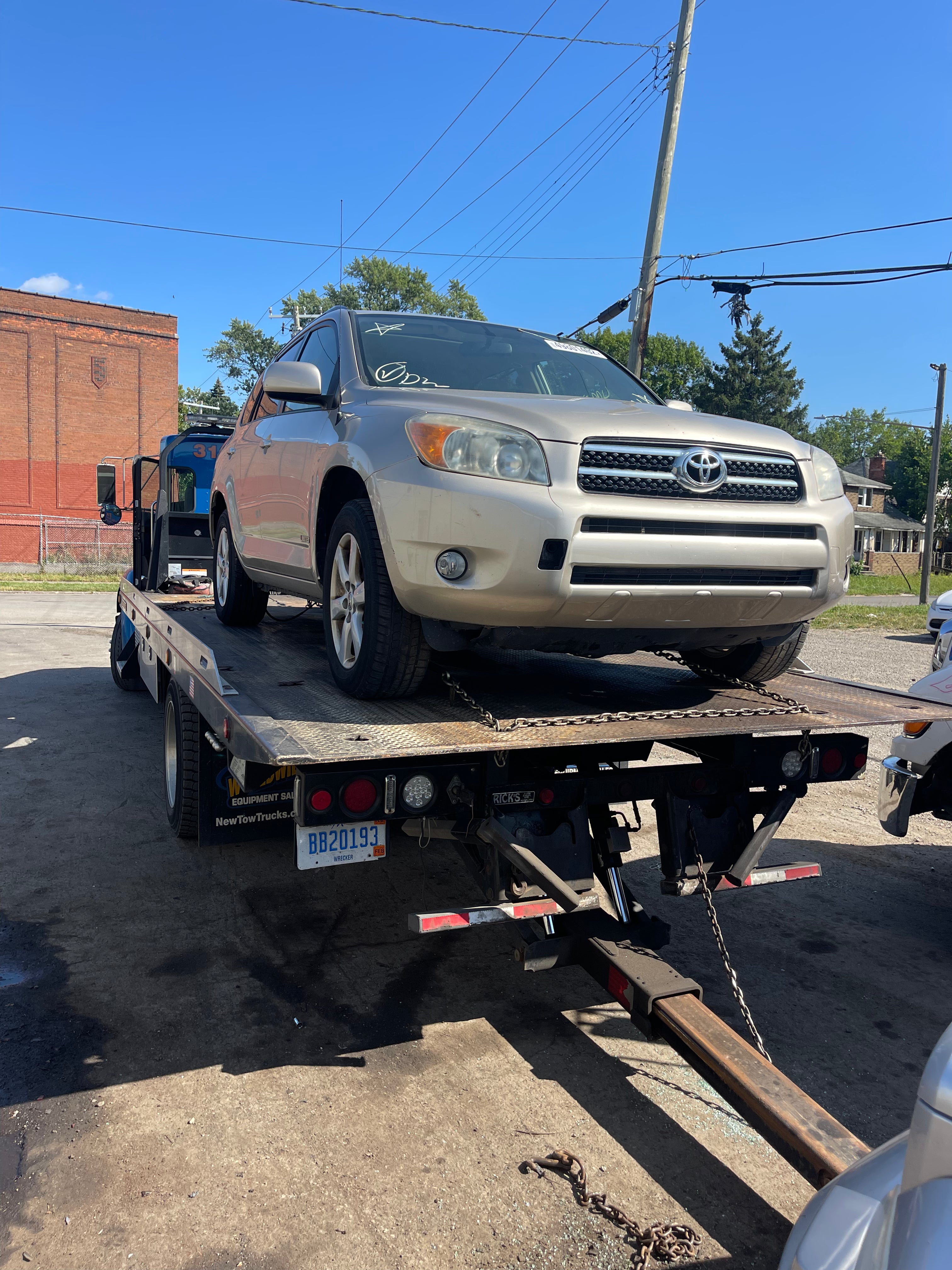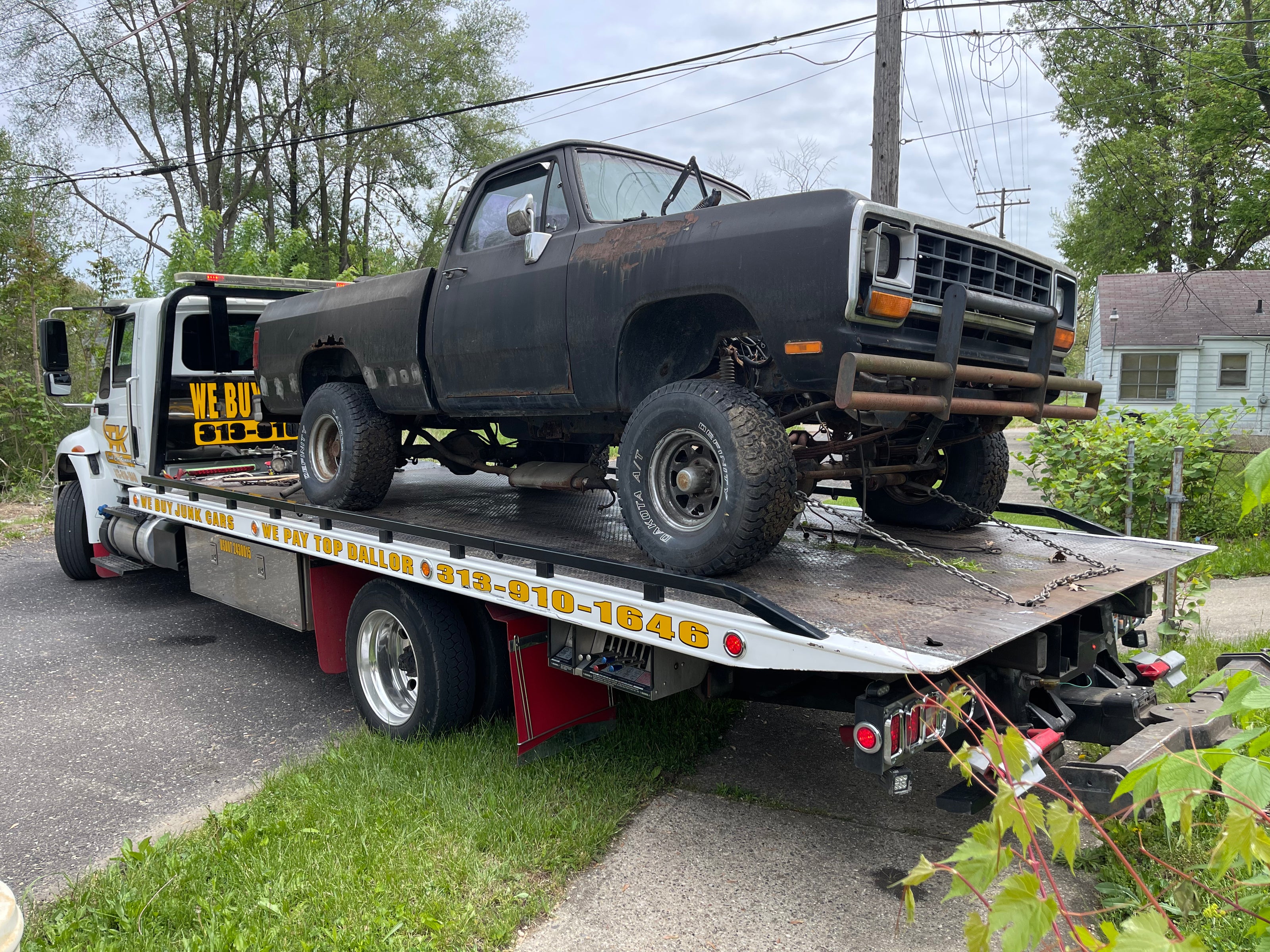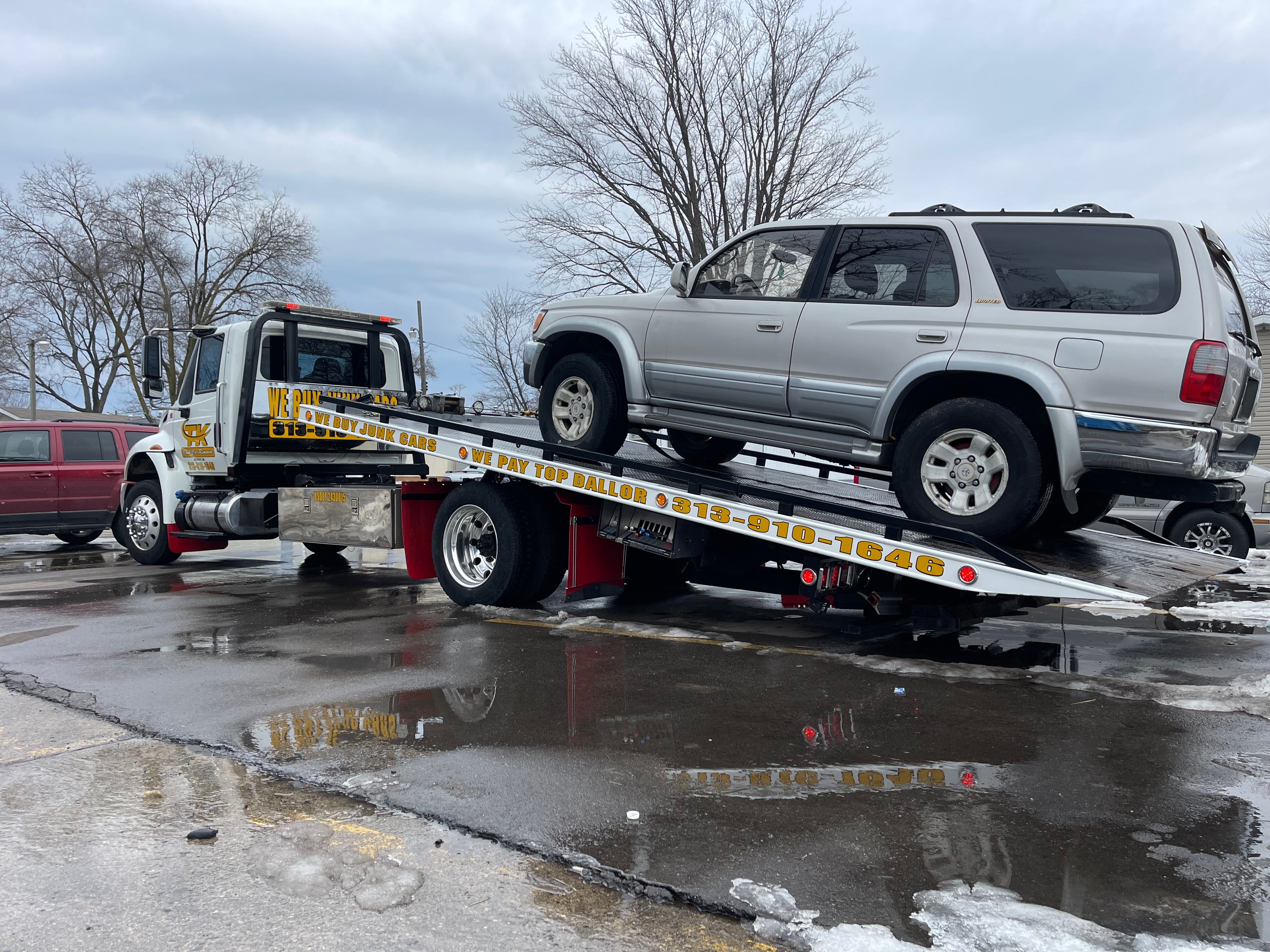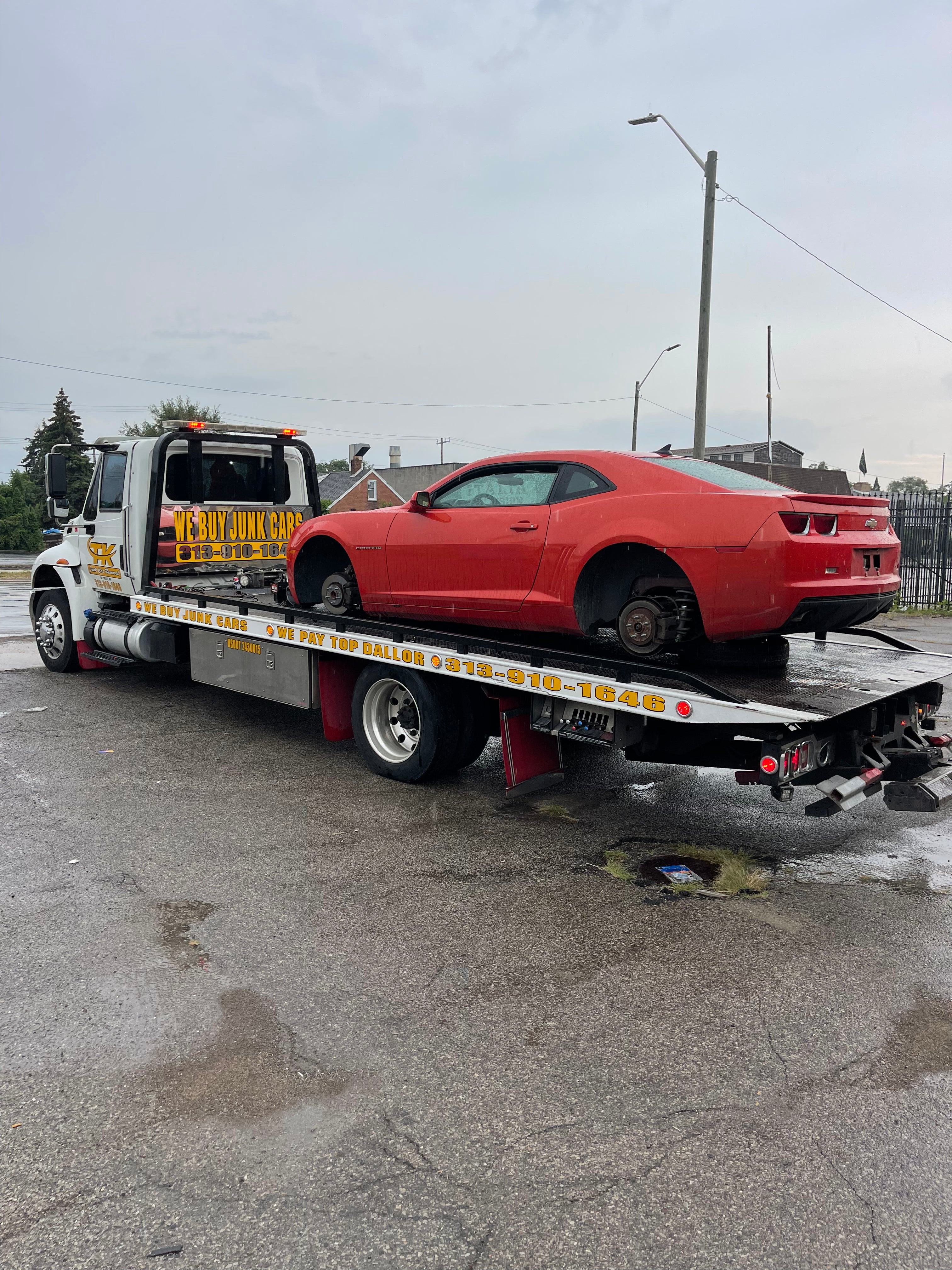EASY PROCESS
-

Contact us
Give us some information about your junk car (Make, Model, and Condition)
-

Free Pick-up
Once you accept the offer, we will remove your junk car for Free
-

Cash Payments
We will pay Top Dollar for your junk car. Call Now For Quick Removal!
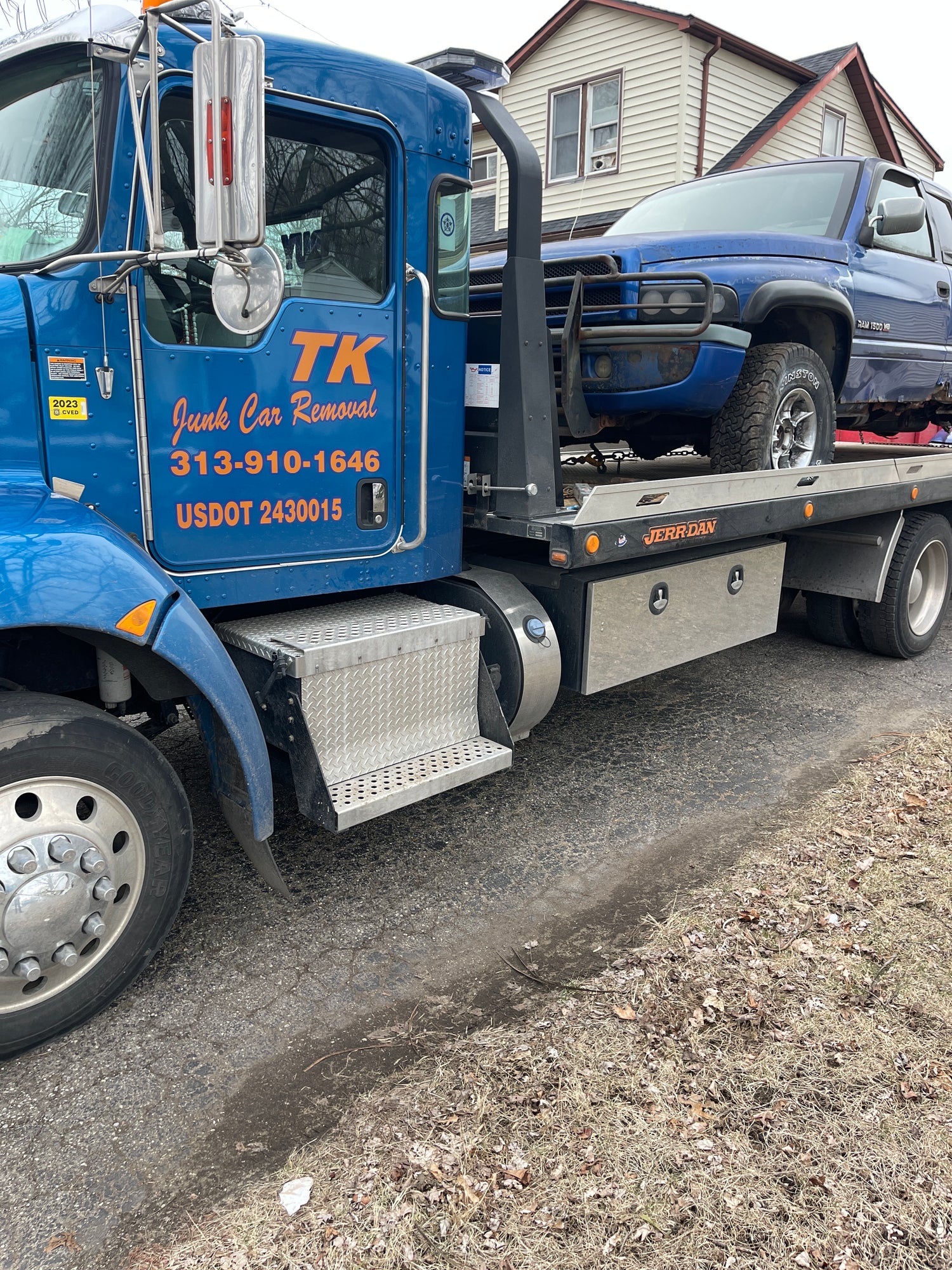
We Pay Cash for Junk Cars
We are here to help you sell your junk car for the best price possible.
We will buy any car, truck, SUV, minivan - Running or Not - within Wayne, Oakland, Monroe, Washtenaw, and Macomb Counties.
TK Cash For Junk Cars offers guaranteed and competitive rates. Our process is fast and easy. All you have to do is provide us with some details about your vehicle. If you like our offer, we will schedule a free pick-up following your best timing, and we will pay you cash on the spot.
ALL CARS MUST HAVE TITLE- We accept old registrations even if your original registration is expired.
4.9 GOOGLE RATING
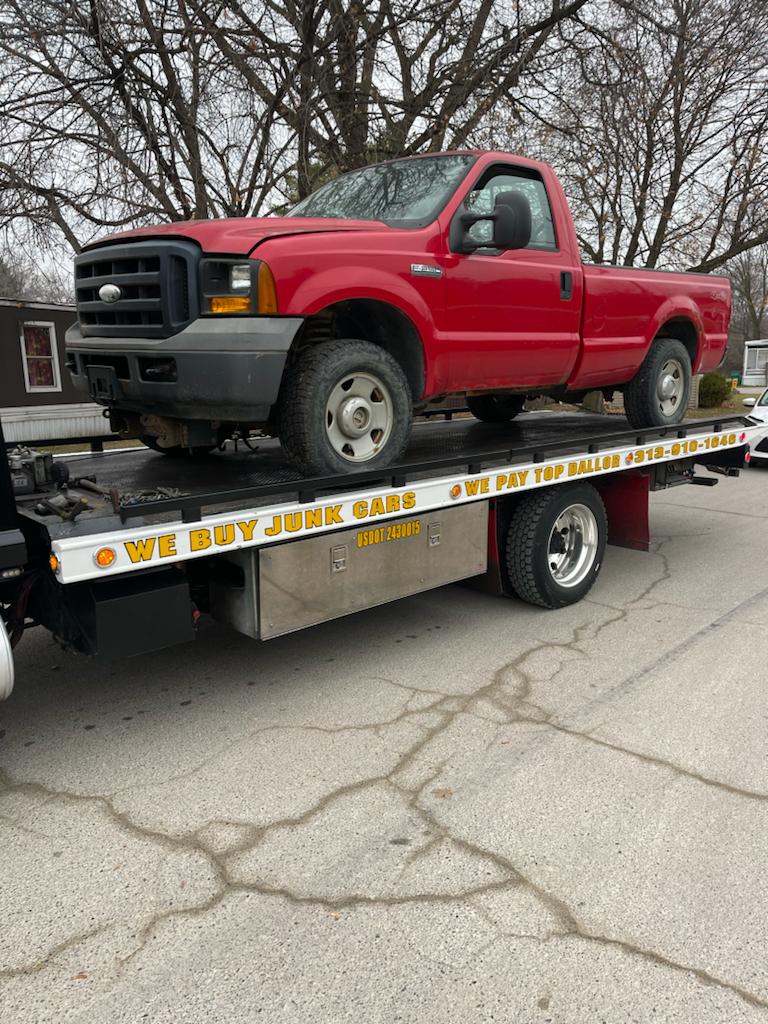
We Buy Junk Cars
At "T.K. Cash For Junk Cars" we're your go-to solution for hassle-free junk car removal. We understand that parting with your old, unwanted vehicle can be daunting, which is why we make the process as seamless as possible.
We offer top dollar for your junk cars and provide cash payments on the spot. Our competitive pricing ensures that you receive a fair value for your vehicle, and what's more, our junk car removal service is entirely free. No need to worry about transportation or towing costs; we take care of it all.
Whether your car is running or not, we'll come to your location, inspect the vehicle, and hand you cash right there. Don't let that eyesore take up space any longer—contact "We Buy Junk Cars" today for a quick, convenient, and financially rewarding solution.
WHY CHOOSE US
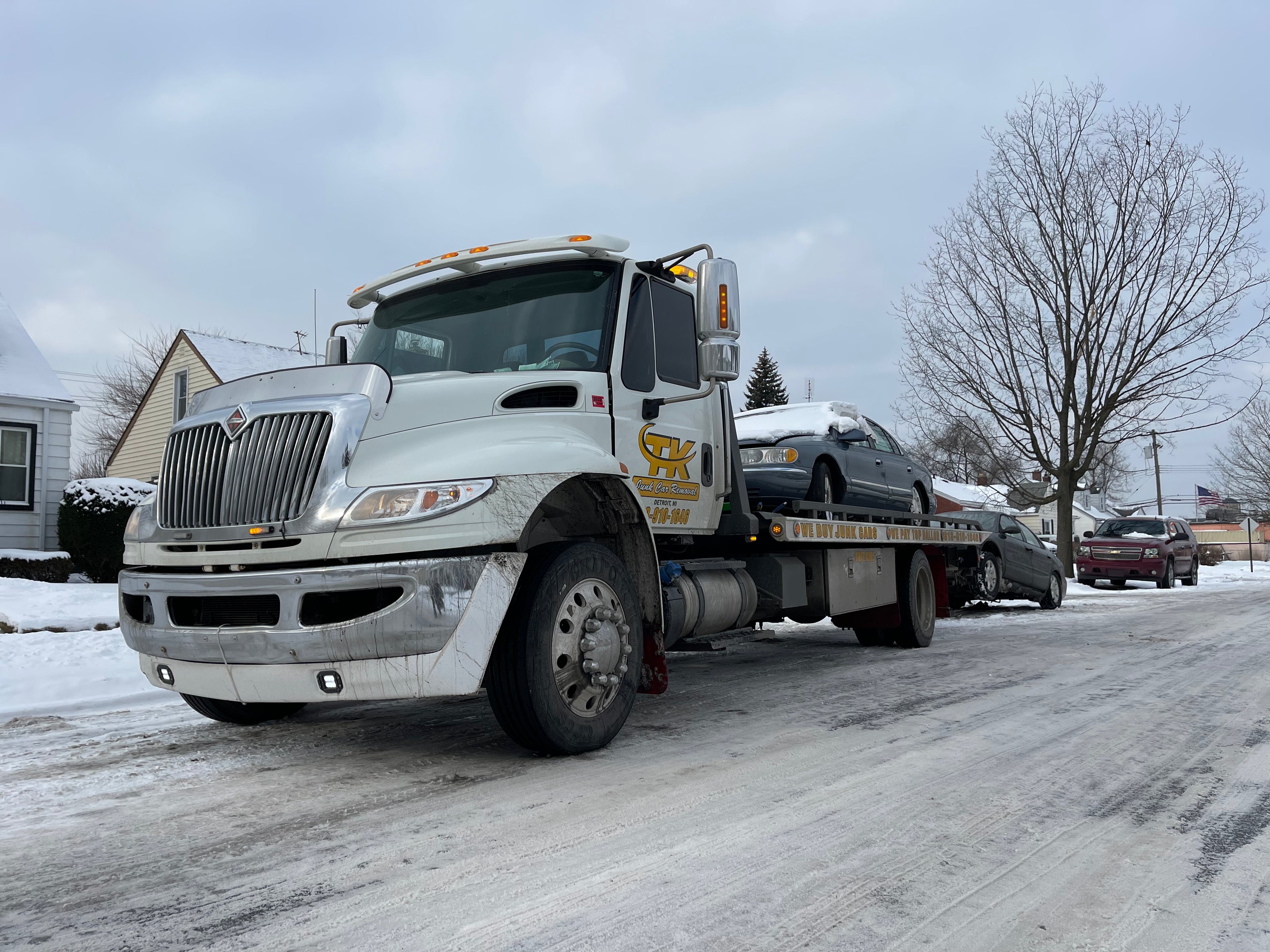
Competitive and Transparent Pricing
We believe in offering our customers the best value for their junk cars. Our pricing is competitive and transparent, so you'll always know you're getting a fair deal.
Cash Payments
We will come to you with cash in hand! We pay Top Dollar on the spot.
Quick and Convenient Service
We understand that your time is valuable. That's why we've streamlined our process to make selling your junk car as quick and convenient as possible.
Free Junk Car Pick-up
We'll come to you to pick up your junk car at no extra cost. No need to worry about transportation; we've got it covered.
Environmentally Friendly
We're committed to eco-friendly disposal practices. We recycle and salvage as much as possible to minimize the impact on the environment.
Your Trusted Junk Car Buyer
"TK. Cash For Junk Cars" stands out as the premier junk car buyer in the area, offering an unmatched experience for those looking to sell their old, unwanted vehicles. With over a decade of experience in the industry, TK. Cash For Junk Cars has earned a stellar reputation for its professionalism and top-notch customer service.
One of the key reasons why "TK. Cash For Junk Cars" is the best choice for selling your junk car is their fair and competitive pricing. They offer some of the most attractive offers in the market, ensuring that you receive the best value for your vehicle. Our transparent and straightforward pricing model has garnered trust among countless satisfied customers.
Additionally, the convenience factor sets TK. Cash For Junk Cars apart. We understand that selling a junk car can be a hassle, so we've streamlined the process. You can get a quote within minutes by providing a few essential details about your car. We will even arrange a free, no-obligation pickup at your convenience, saving you time and effort.
